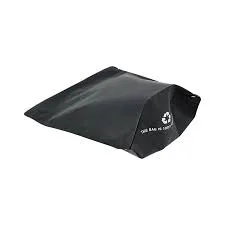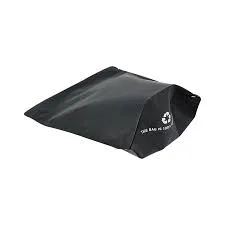Email: enid@bc-pak.com
Tel: 86-757- 88811186
- Afrikaans
- Albanian
- Amharic
- Arabic
- Armenian
- Azerbaijani
- Basque
- Belarusian
- Bengali
- Bosnian
- Bulgarian
- Catalan
- Cebuano
- chinese_simplified
- chinese_traditional
- Corsican
- Croatian
- Czech
- Danish
- Dutch
- English
- Esperanto
- Estonian
- Finnish
- French
- Frisian
- Galician
- Georgian
- German
- Greek
- Gujarati
- haitian_creole
- hausa
- hawaiian
- Hebrew
- Hindi
- Miao
- Hungarian
- Icelandic
- igbo
- Indonesian
- irish
- Italian
- Japanese
- Javanese
- Kannada
- kazakh
- Khmer
- Rwandese
- Korean
- Kurdish
- Kyrgyz
- Lao
- Latin
- Latvian
- Lithuanian
- Luxembourgish
- Macedonian
- Malgashi
- Malay
- Malayalam
- Maltese
- Maori
- Marathi
- Mongolian
- Myanmar
- Nepali
- Norwegian
- Norwegian
- Occitan
- Pashto
- Persian
- Polish
- Portuguese
- Punjabi
- Romanian
- Russian
- Samoan
- scottish-gaelic
- Serbian
- Sesotho
- Shona
- Sindhi
- Sinhala
- Slovak
- Slovenian
- Somali
- Spanish
- Sundanese
- Swahili
- Swedish
- Tagalog
- Tajik
- Tamil
- Tatar
- Telugu
- Thai
- Turkish
- Turkmen
- Ukrainian
- Urdu
- Uighur
- Uzbek
- Vietnamese
- Welsh
- Bantu
- Yiddish
- Yoruba
- Zulu
Wine Juice Fruit Storage Aseptic High Barrier Aluminum Foil Reusable Coffee Bags Pouch
Views :
Update time : Feb . 13, 2025 06:48
In the modern marketplace, sustainable packaging is not just a trend but a necessity, especially for small businesses eager to capture conscientious consumers. The global shift towards sustainability is reshaping consumer expectations, and businesses that don't adapt may find themselves falling behind. Understanding sustainable packaging involves more than simply switching to recyclable materials—it’s about innovative approaches that demonstrate a company's deep commitment to the environment while meeting practical business needs.
Cost is a critical consideration for small businesses contemplating sustainable packaging. Initially, sustainable materials may appear costlier than traditional options. However, this view overlooks long-term benefits and potential savings. Reduced packaging weight can lower shipping costs, and minimizing material usage can decrease expenses over time. Collaborating with manufacturers who specialize in sustainable materials can also lead to bulk purchasing discounts. Moreover, many governments are introducing subsidies and incentives for businesses that adopt sustainable practices, which can offset initial costs. In terms of marketing, sustainable packaging serves as a powerful storytelling tool. It presents an opportunity to engage with the customer base on a deeper level. Marketing campaigns can focus on the environmental impact reduction achieved through sustainable packaging choices, effectively turning customers into advocates for the brand. Highlighting these efforts in marketing materials reflects a commitment to broader corporate social responsibility goals. Moreover, sustainability in packaging design should also consider the user experience. Easy-to-open, reusable, or multi-purpose designs not only add convenience but also extend the lifecycle of packaging. Consider companies that create beautiful packaging which consumers repurpose, avoiding the waste stream altogether. This practice not only reduces waste but also keeps brands in the consumers' space longer. In conclusion, sustainable packaging for small businesses is feasible and offers numerous advantages ranging from enhanced brand loyalty to cost savings and improved environmental impact. The adoption process should be viewed as an investment in the business's future, aligning with modern consumer expectations and global environmental goals. Small businesses must leverage experience, demonstrate expertise, assert authoritativeness, and build trust among consumers to stand out in the increasingly competitive sustainable marketplace. By doing so, they not only contribute to a healthier planet but also position themselves for continued success.


Cost is a critical consideration for small businesses contemplating sustainable packaging. Initially, sustainable materials may appear costlier than traditional options. However, this view overlooks long-term benefits and potential savings. Reduced packaging weight can lower shipping costs, and minimizing material usage can decrease expenses over time. Collaborating with manufacturers who specialize in sustainable materials can also lead to bulk purchasing discounts. Moreover, many governments are introducing subsidies and incentives for businesses that adopt sustainable practices, which can offset initial costs. In terms of marketing, sustainable packaging serves as a powerful storytelling tool. It presents an opportunity to engage with the customer base on a deeper level. Marketing campaigns can focus on the environmental impact reduction achieved through sustainable packaging choices, effectively turning customers into advocates for the brand. Highlighting these efforts in marketing materials reflects a commitment to broader corporate social responsibility goals. Moreover, sustainability in packaging design should also consider the user experience. Easy-to-open, reusable, or multi-purpose designs not only add convenience but also extend the lifecycle of packaging. Consider companies that create beautiful packaging which consumers repurpose, avoiding the waste stream altogether. This practice not only reduces waste but also keeps brands in the consumers' space longer. In conclusion, sustainable packaging for small businesses is feasible and offers numerous advantages ranging from enhanced brand loyalty to cost savings and improved environmental impact. The adoption process should be viewed as an investment in the business's future, aligning with modern consumer expectations and global environmental goals. Small businesses must leverage experience, demonstrate expertise, assert authoritativeness, and build trust among consumers to stand out in the increasingly competitive sustainable marketplace. By doing so, they not only contribute to a healthier planet but also position themselves for continued success.
Recommend products
Read More >>
Related News
Read More >>













